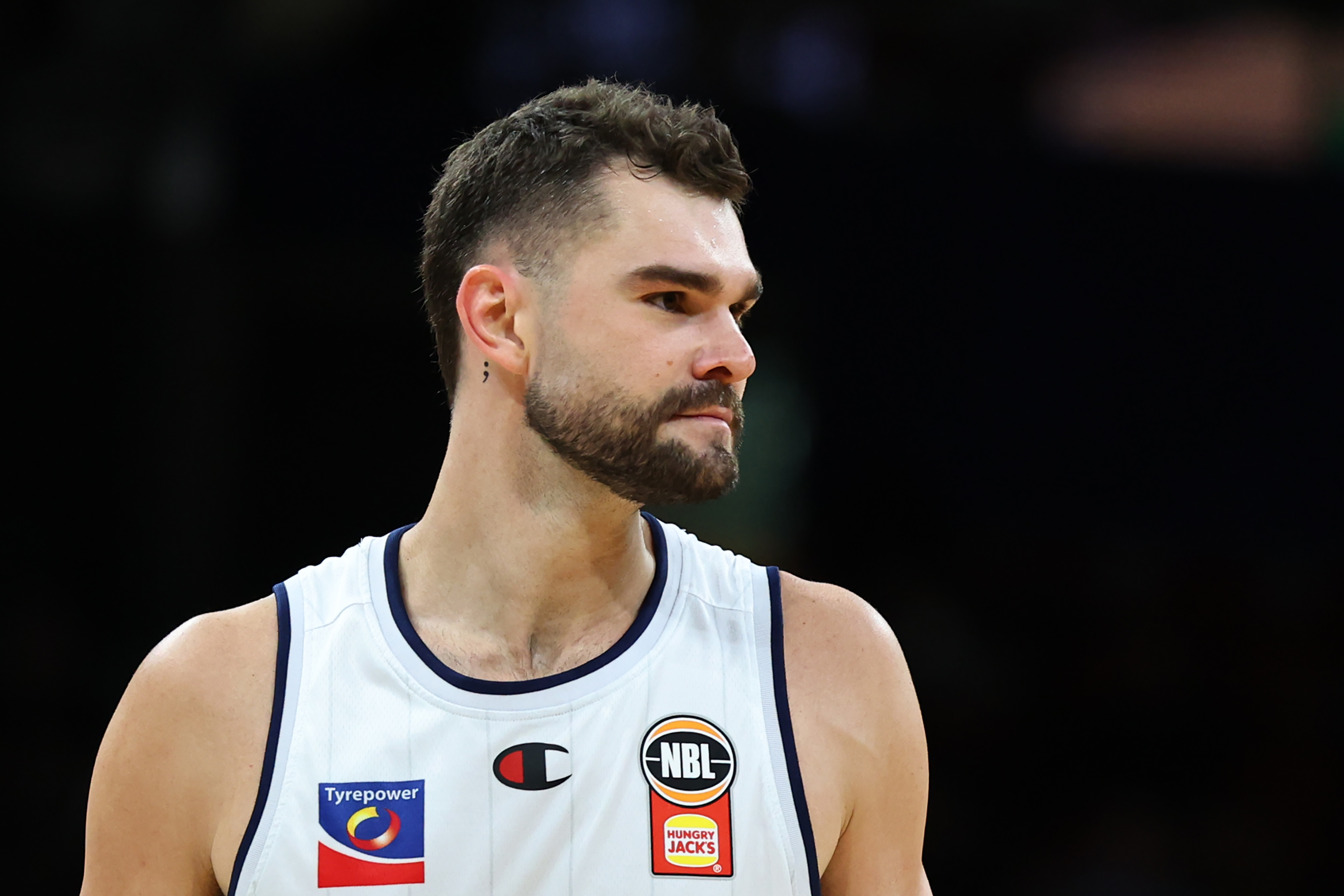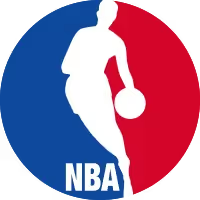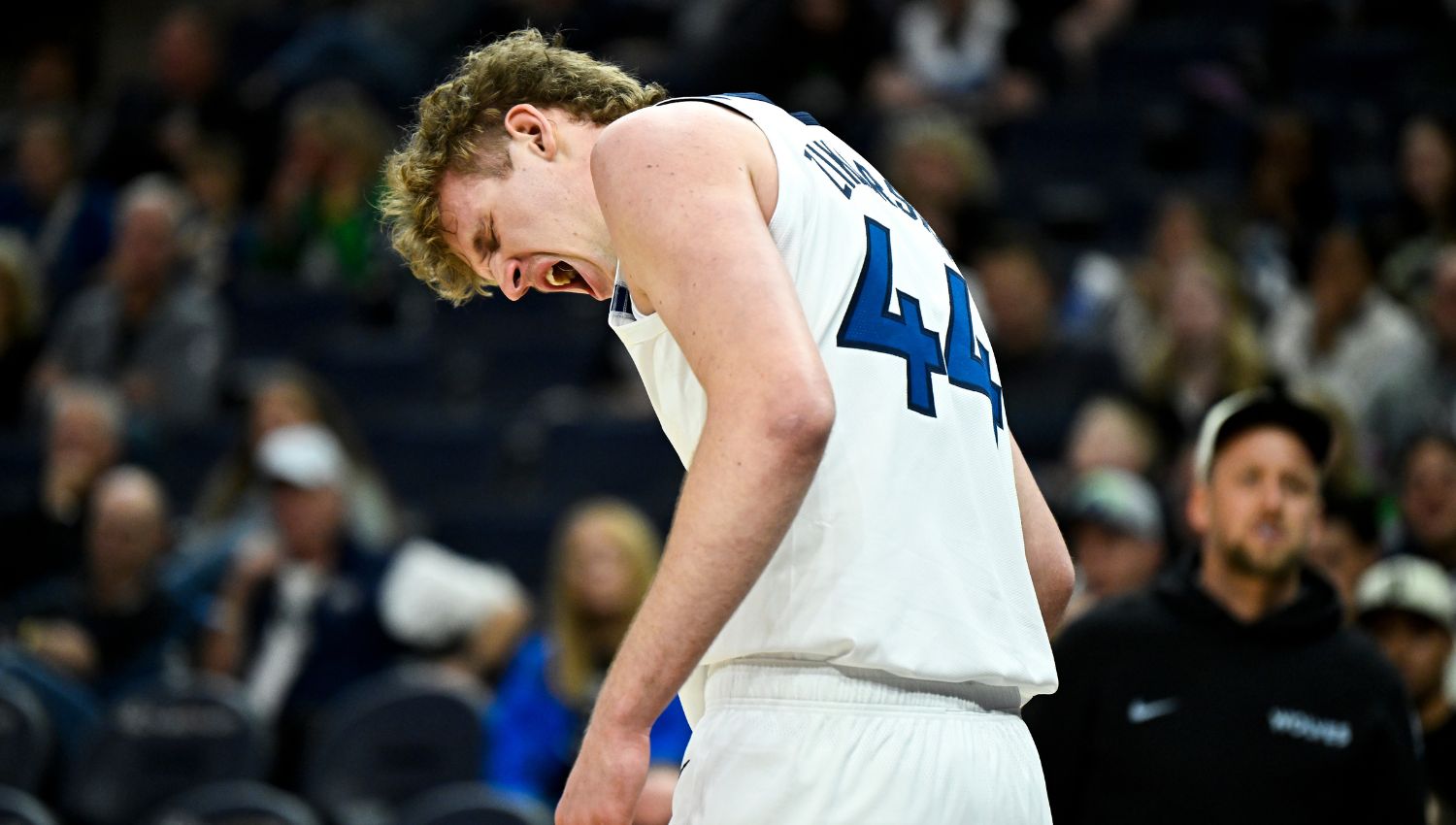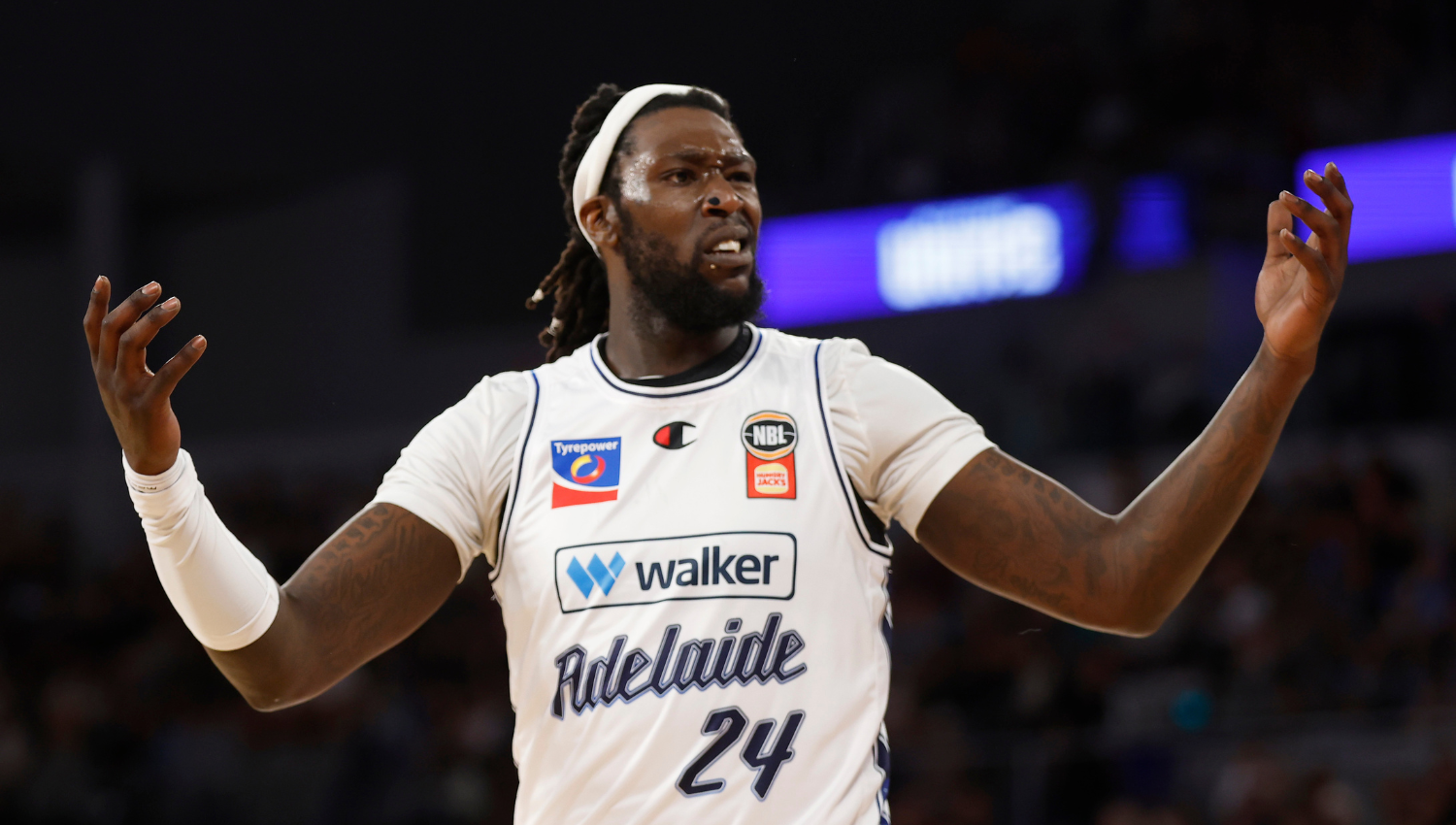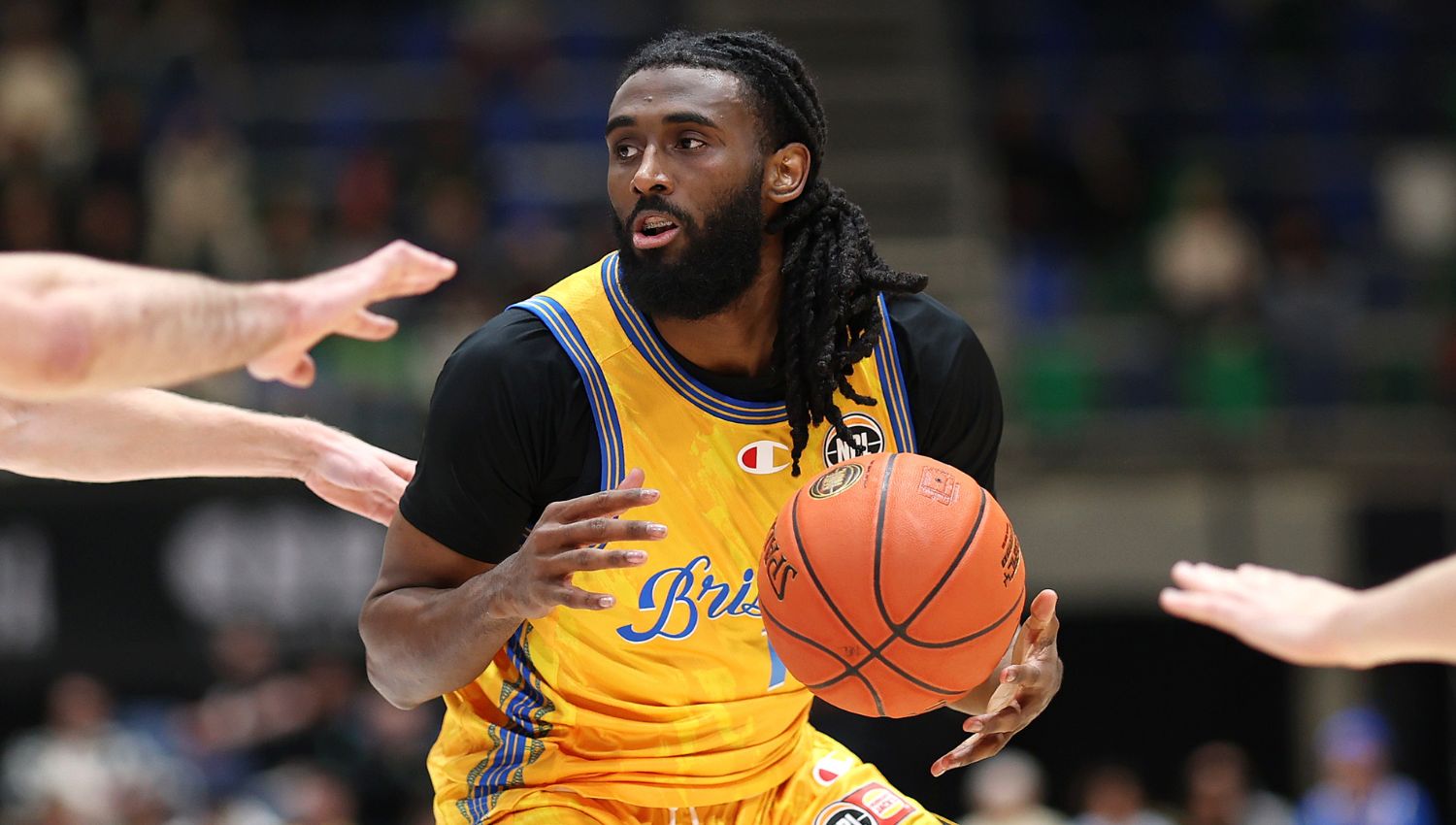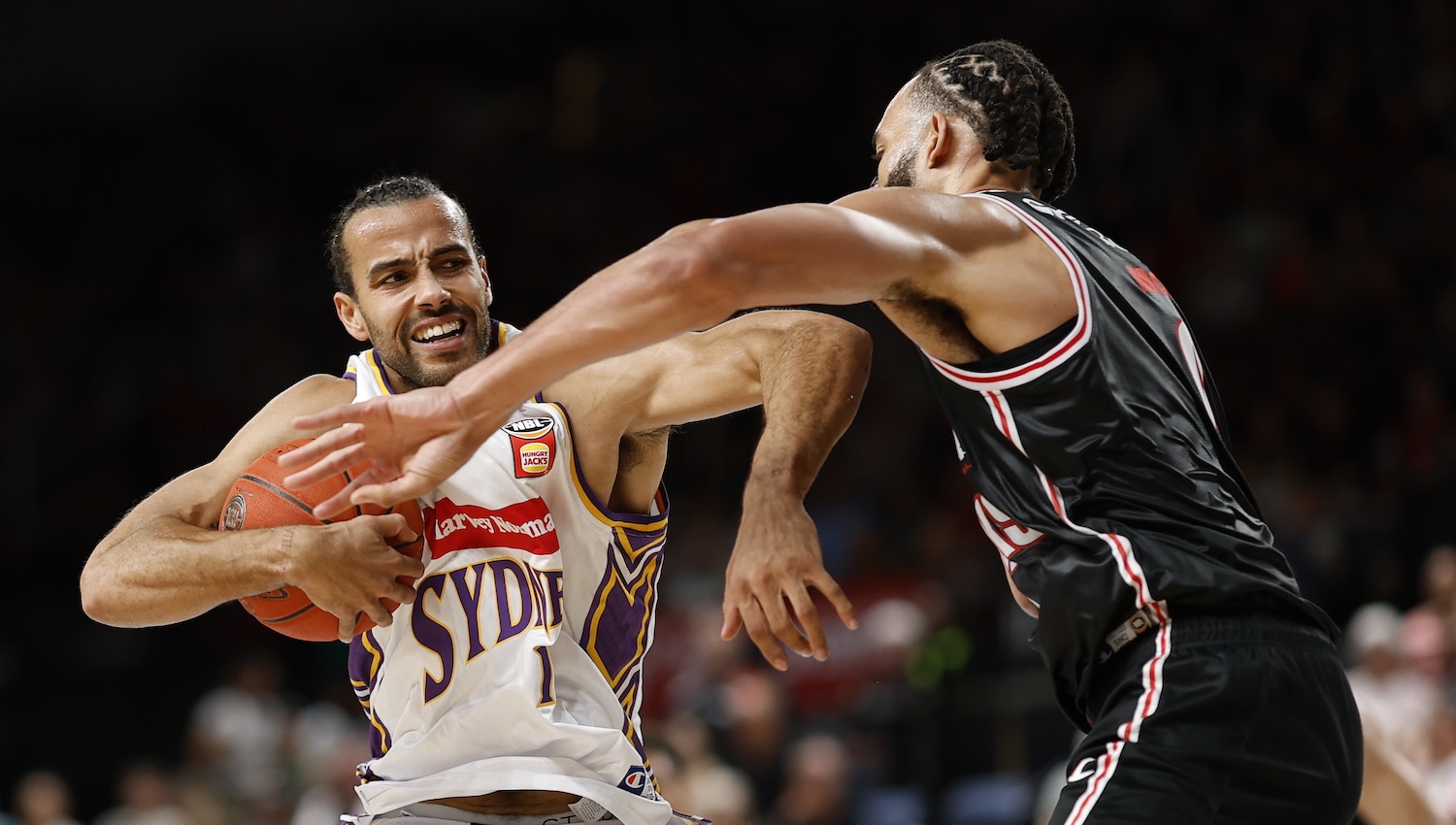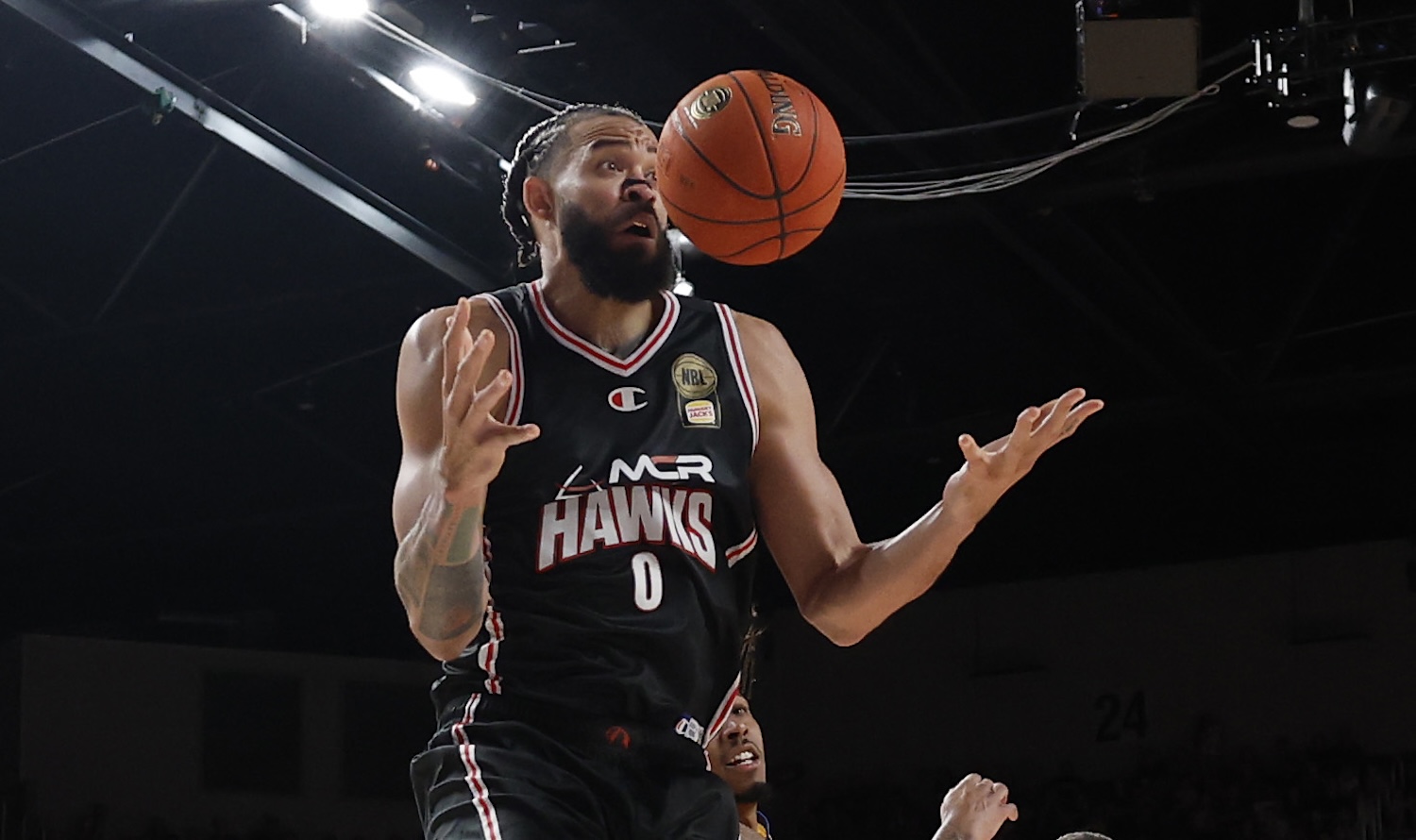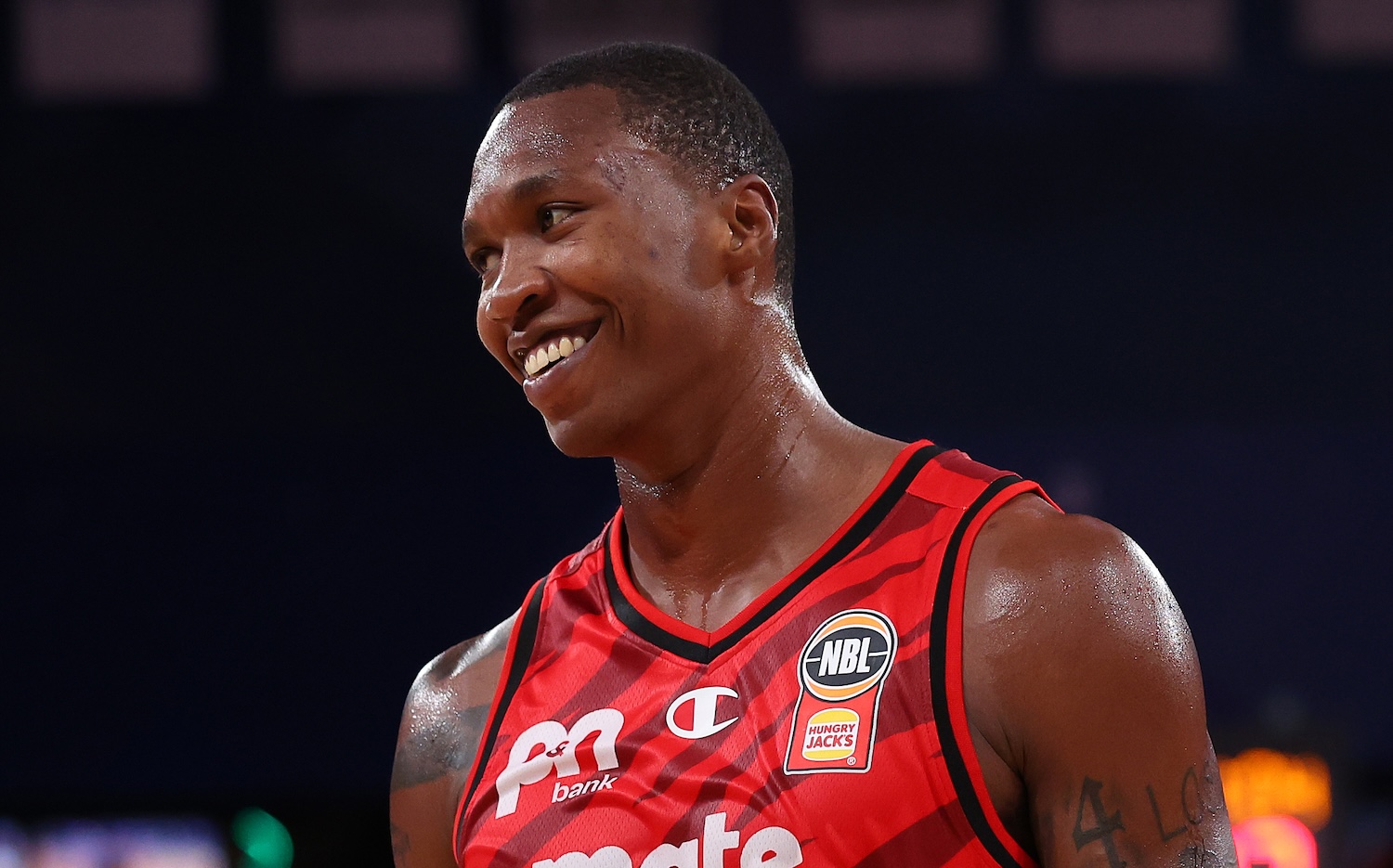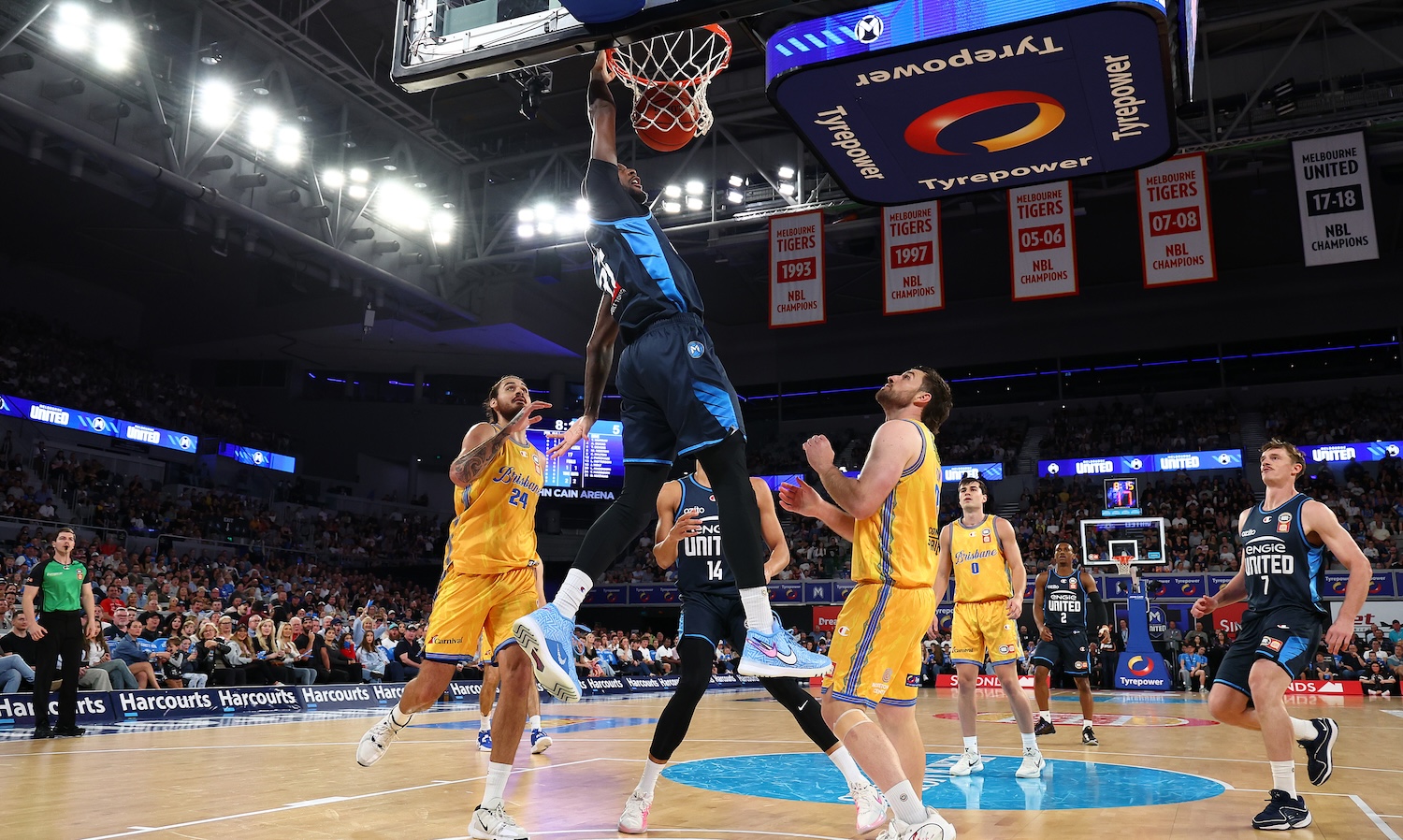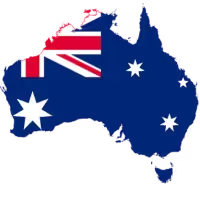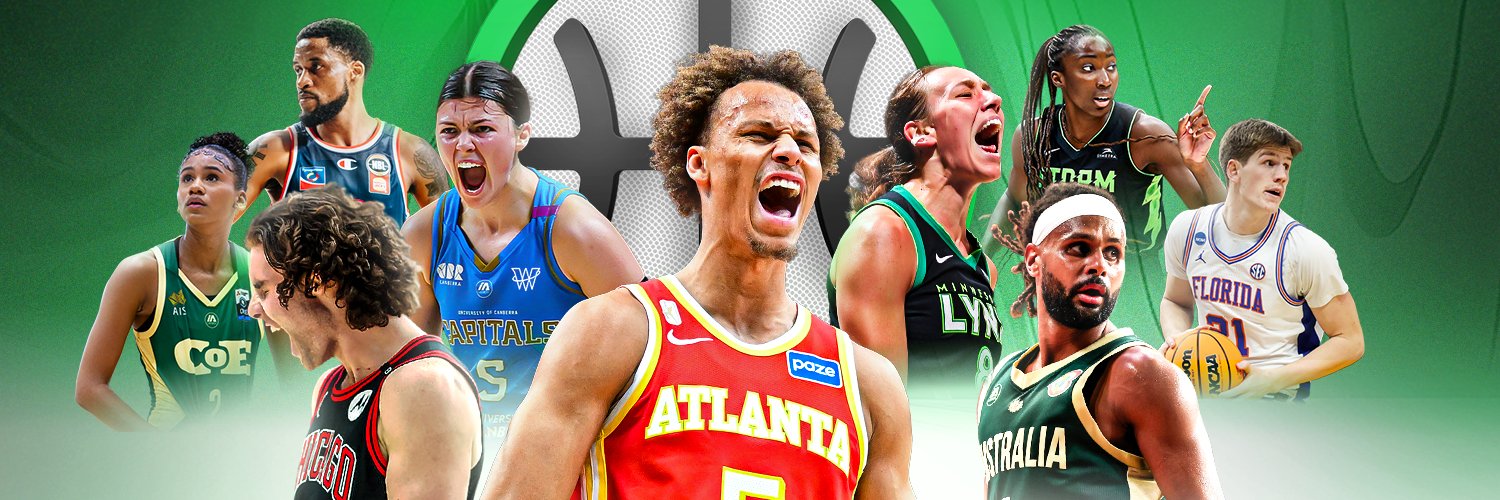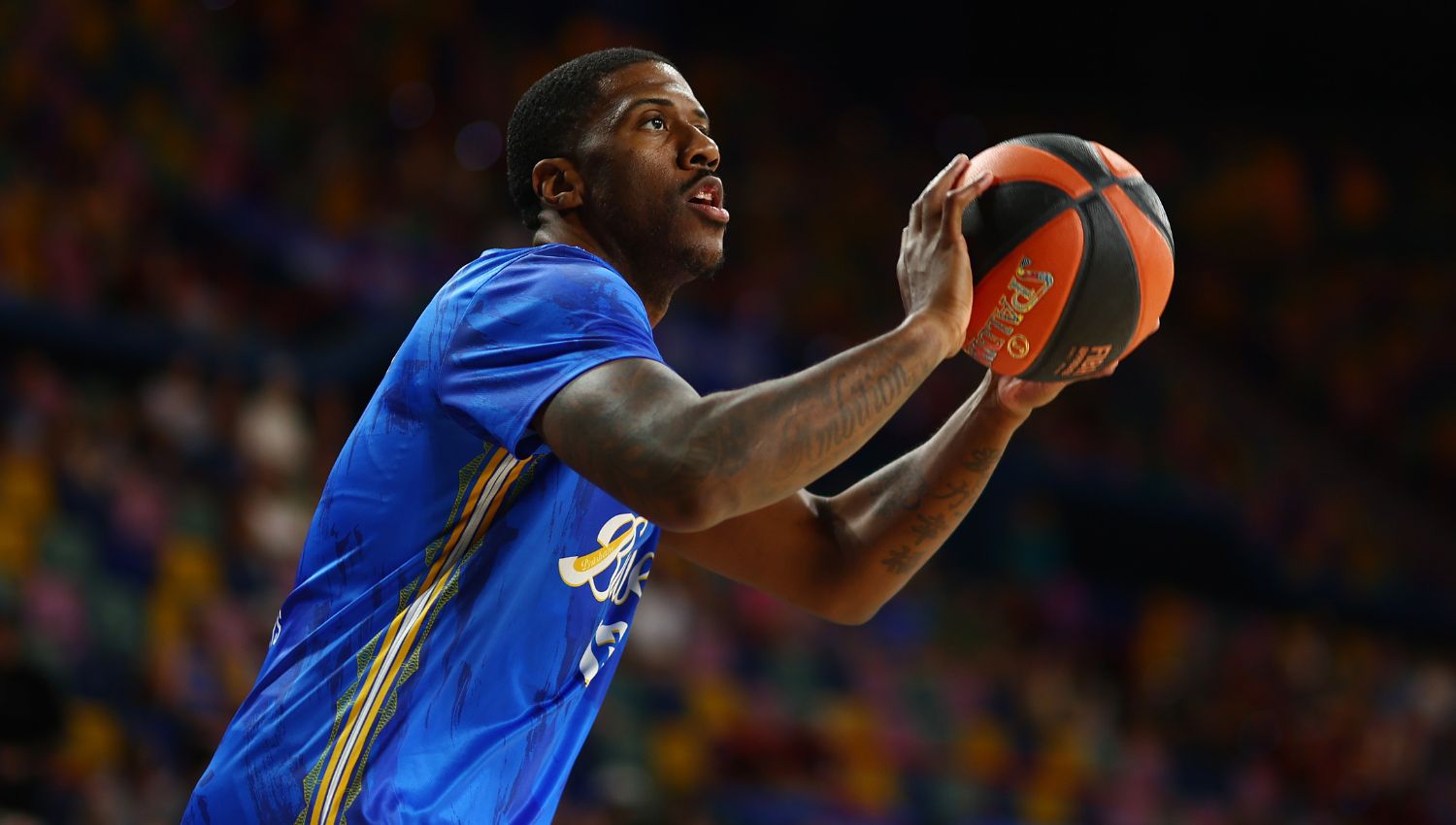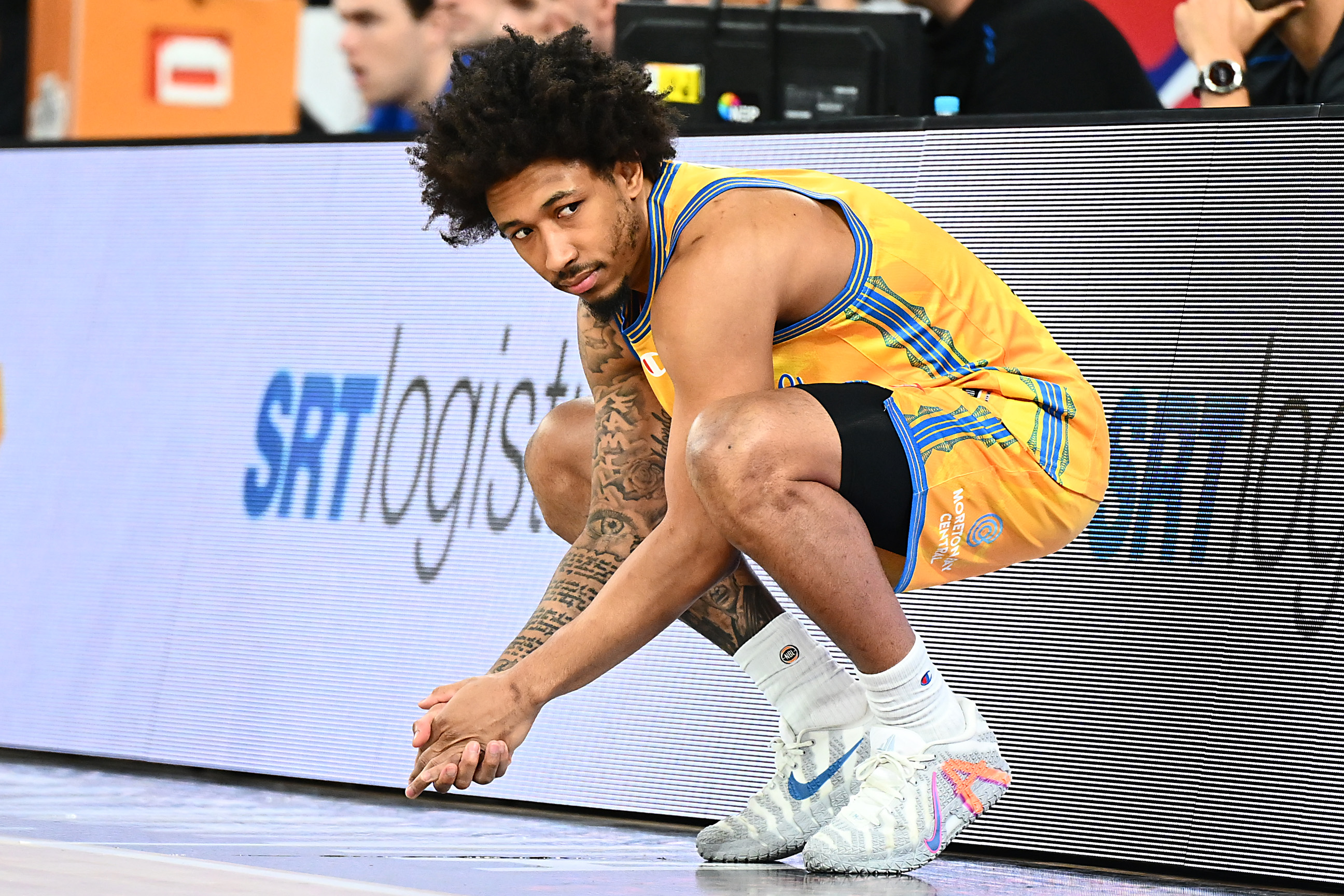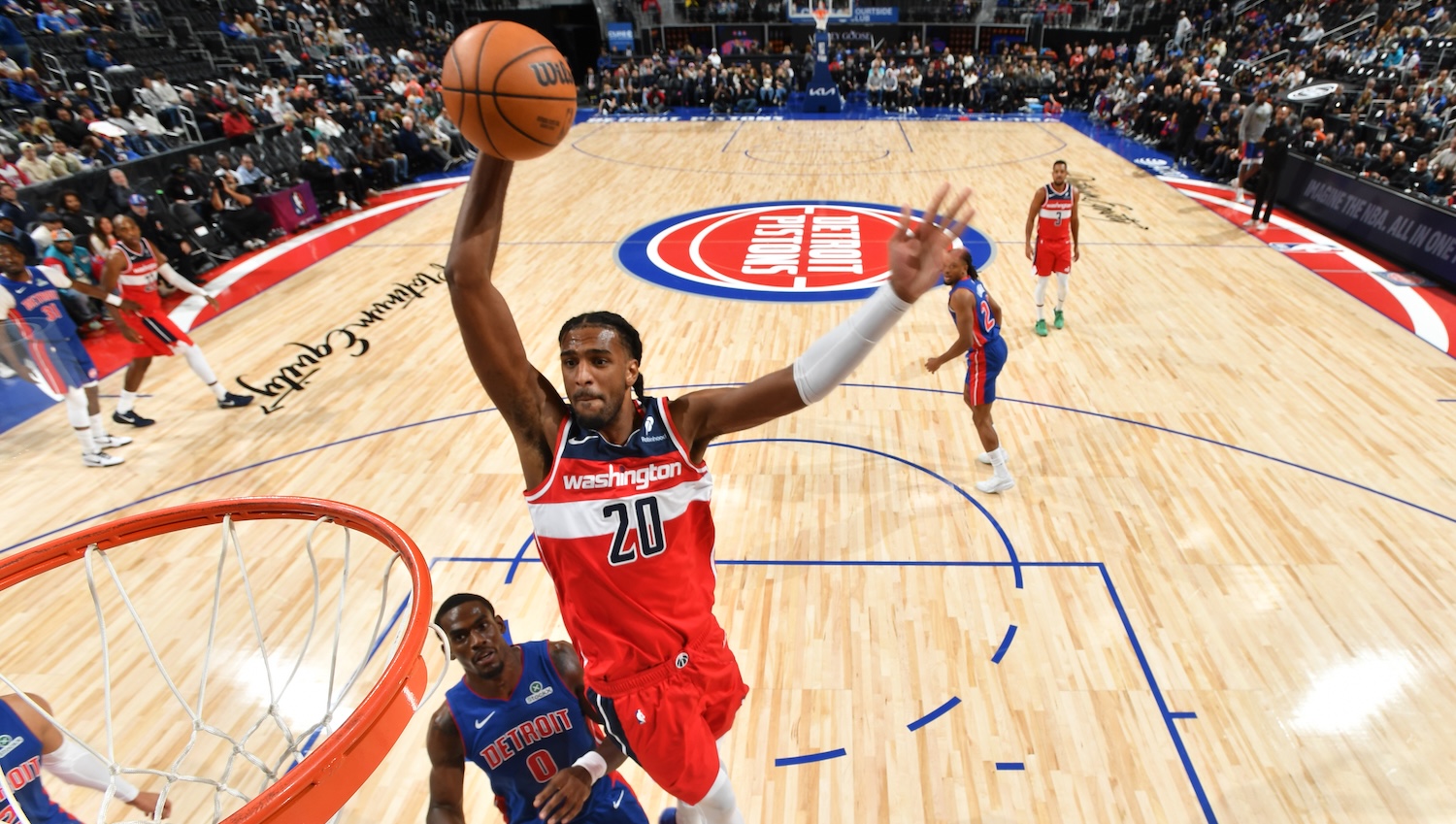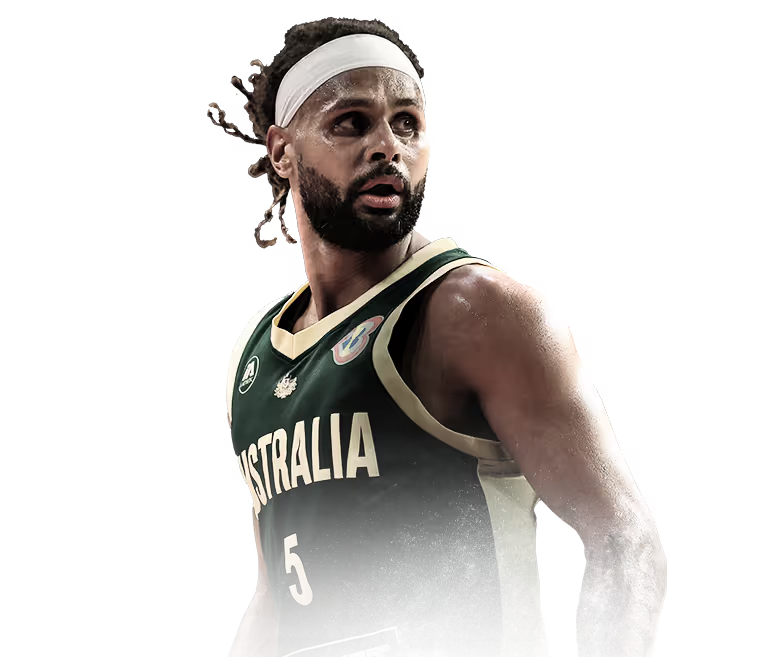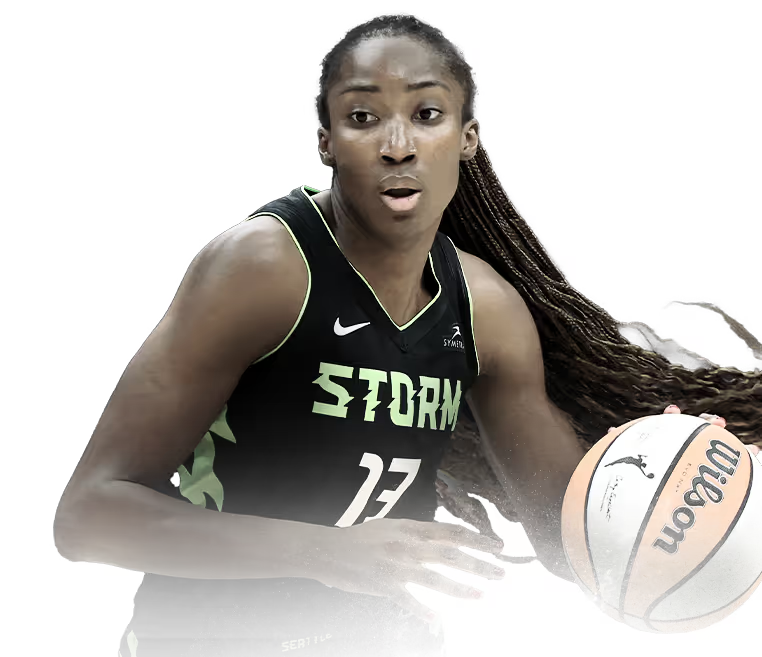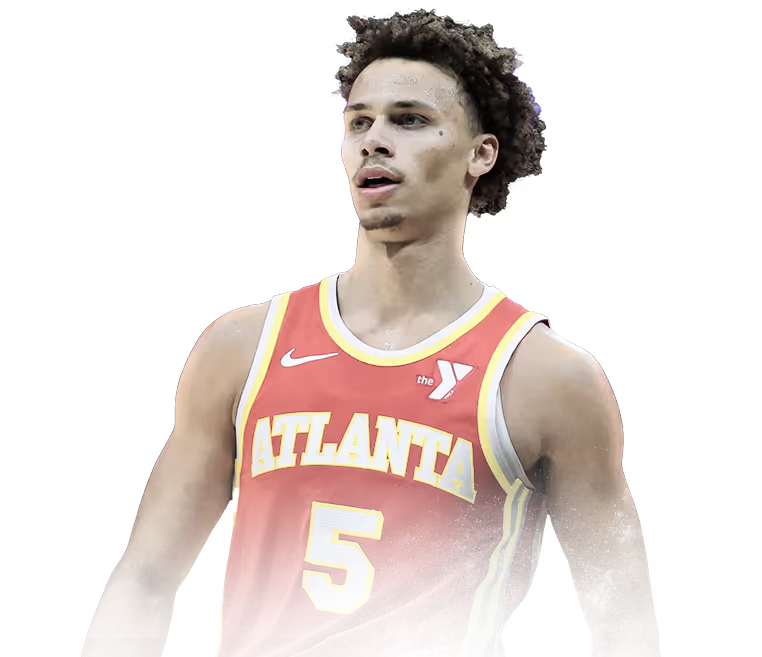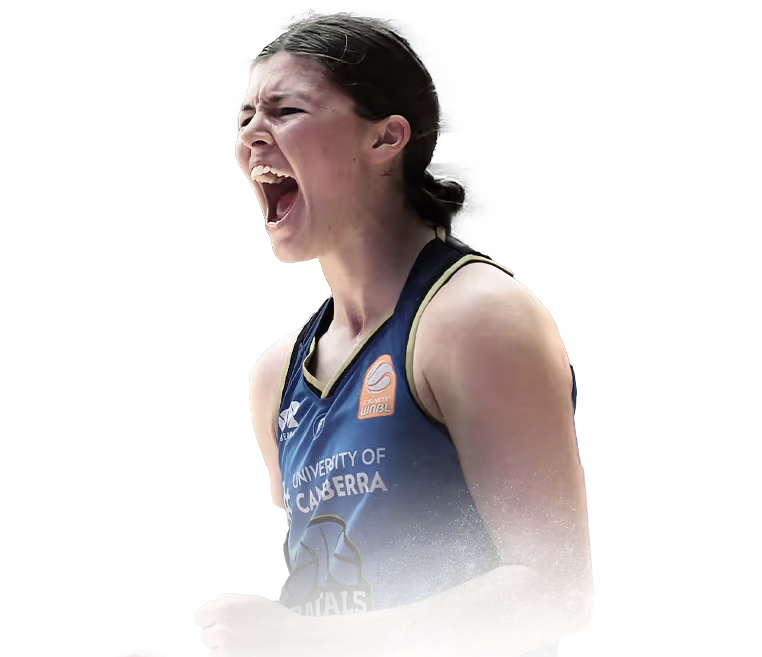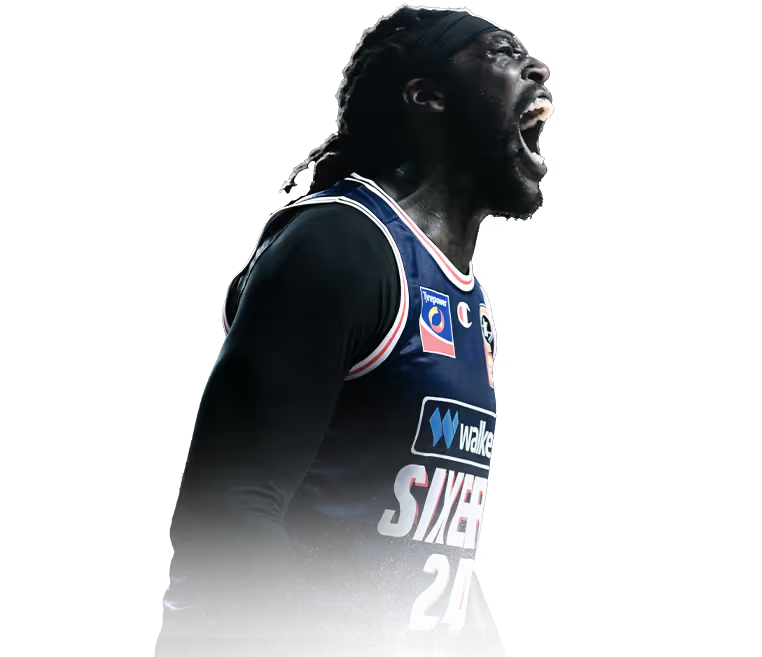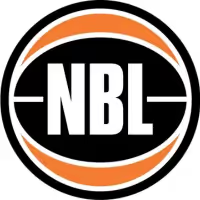

3
Oct
Opinion & Analysis
Case FOR Dash staying two seasons as NBL Next Star
Dash Daniels’ NBA draft stock splits scouts, but two NBL seasons may maximise his long-term value.
- 16-year-old Dash signs on NBL Next Stars dotted line
- Mock draft: Karim Lopez, Daniels dash into 2026 Top 10
- Dean Vickerman to take time with Dash's NBA dream
Australian basketball prodigy Dash Daniels has developed into one of the world's top emerging talents and looks to have a super bright future ahead of him.
Of course, the bloodlines are promising, with brother Dyson Daniels a key piece with the Atlanta Hawks and father Ricky a former college baller at North Carolina State, as well as with the NBL1 South's Bendigo Braves.
As most know by now, Daniels knocked back heavy interest from US colleges to join the NBL’s Next Stars program with Melbourne United, making him one of the youngest players in the league’s history. Suffice to say, the 17-year-old is likely on his way to a long and burgeoning career at the NBA level, with certain outlets projecting Dash to land in the lottery of the 2026 NBA draft.
That said, the consensus was not unanimous, with other outlets projecting Daniels in the back half of the first round and even in the second round. The reasoning behind that initial lack of consensus – and why the consensus now appears to be shifting in a positive direction, given Dash’s excellent start to the NBL season – is what I am here to discuss. In short, draft analysts aplenty were worried about Daniels’ offence being up to scratch. If that was going to be the case, spending a second season in the NBL to refine those skills might have been best for maximising his long-term value.
We’ll come back to that, but first, let’s take stock of Dash’s journey to get to this point. Ironically, the scouting report on Daniels has been remarkably similar to how pundits viewed Dyson at a comparable age: an elite defensive prospect with a raw offensive game. Of course, those who rated Dyson as a lottery talent pre-draft primarily because of that defensive upside – betting the offence would come with time – were proven right, as he developed significantly on the offensive end in his third season. That development into a true two-way player has the Hawks guard set for a lucrative payday after finishing as a finalist for Defensive Player of the Year last season.
Legitimate two-way players have become among the most sought-after commodities in recent times, which is likely what has intrigued NBA executives so much about Dash. At 6'6" with a 6'10" wingspan, Daniels has all the physical tools to be elite on that end. You add to that his quick feet and instinct for the ball, and it makes for one heck of a defensive prospect. To illustrate this point, Dash recorded an insane average of 3.6 steals per game during the FIBA U17 Basketball World Cup last year! Clearly, NBA front offices won’t be worried about Daniels’ defensive ability – they will be weighing whether what was known to be a raw offensive skillset develops like his brother’s did.
So, what do the statistics tell us about Dash’s offence? Internationally speaking, he has represented Australia at five junior tournaments thus far. Of those five tournaments, stats from both the U17 and U19 FIBA World Cups are probably the only truly representative samples to use, given Australia's complete dominance in other competitions, such as the FIBA Asia Cup. In other words, tournaments in which Australia defeated most of its opponents by 50-80 points are less helpful in gleaning meaningful takeaways about Daniels' game.
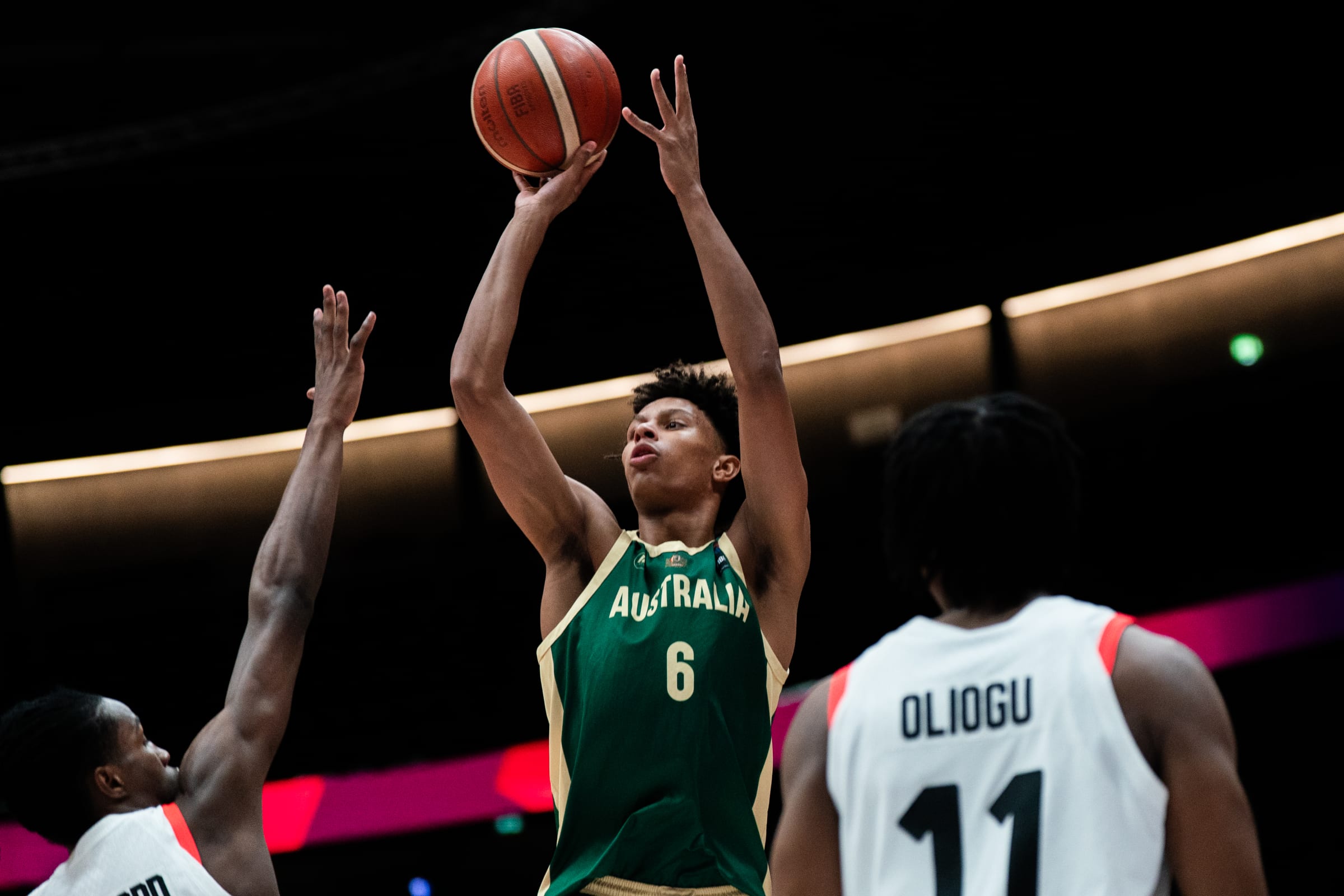
Nonetheless, for those interested, Dash averaged 10.9 PPG, 3.5 APG, and 4.3 RPG on 51.1% shooting from two-point range, an impressive 39.5% from three-point range (albeit on a relatively low volume), and 62.1% from the free-throw line at the three non-World Cup tournaments he has played in. Those numbers are mostly solid. However, when competing against better teams at World Cups, the numbers largely declined.
At the U17s last year, Daniels shot 48.3% from two and 26.9% from three, but to his credit, he improved his free-throw efficiency to 80.8%. At the U19s this year, Dash’s two-point shooting efficiency plummeted to 25.0% (while shooting 36.4% from three, interestingly), and he shot just 52.4% from the free-throw line. Daniels averaged 8.1 PPG, 2.7 APG, and 3.1 RPG – all career lows in his time repping Australia at the junior level.
On the contrary, Dash showed some promising signs in domestic competition, playing eight games for the Sandringham Sabres in the NBL1 South this past season, where he averaged 15.2 PPG, 1.9 APG, and 3.5 RPG on 44.0% from two and 60.0% at the charity stripe—both of which aren’t great, admittedly. However, he shot a blistering 54.5% from three on 4.1 attempts per game; that was three-point accuracy and volume he had not shown before his stint with the Sabres.
All in all, if you were asked to write a scouting report on Daniels entering NBL26, it would probably say that he is a capable but inconsistent three-point shooter (evidenced by his fluctuating three-point percentages and volumes between different competitions). Additionally, Dash’s ability to create his own shot is probably his biggest weakness (evidenced by his consistently low two-point percentages), while his poor free-throw shooting remains a worry. Conversely, Daniels has solid instinctual passing ability and a knack for rebounding at his position, while his defence is easily his biggest drawcard.
The U19 World Cup stats, though, were especially relevant because that was the last major international junior tournament NBA scouts had to watch Dash before he becomes draft eligible. I imagine both the U17 and U19 World Cups were particularly significant from a scouting perspective because they gave evaluators a chance to see Daniels playing as a primary scoring option against elite competition of a similar age—something they would have seen (to a degree) if he went to college but won’t see when he’s playing with Melbourne United. And although Dash might not ever truly be asked to play that role as a professional, scouts would have wanted to see more than he showed in Switzerland.
Had Daniels played better, it likely would've cemented him high on most draft boards 12 months out. There was significant excitement surrounding Dash heading into the tournament, with ESPN projecting him to go 10th in their June mock. Unfortunately, that anticipation wasn’t conveyed in production, leaving evaluators in the dark as to where they placed him—hence the discrepancies on draft boards heading into this NBL season. On one hand, there remained the allure of a tantalising upside if the pieces came together, validating a higher projection from an outlet like Sports Illustrated, which ranked him 11th on their August big board. On the other hand, betting on Daniels seemed like a high-risk play coming off that underwhelming World Cup, validating a lower projection from an outlet like Bleacher Report, which ranked him 26th in August.
Now, it's worth acknowledging that Dash was significantly younger than most other players at that tournament, so he deserves some level of grace. Sam Vecenie, draft analyst for The Athletic (who happens to be based in Melbourne), shared a similar sentiment regarding the age, but also voiced legitimate concern with Daniels’ U19 performance on an August episode of his podcast, saying he’s “still very worried about him as a 2026 prospect.”
Vecenie revealed that even before the U19 World Cup, he had Daniels projected lower in the '26 draft than other outlets did. However, following that tournament, he wasn't sure if he would even have Dash on his 2026 draft board, period.
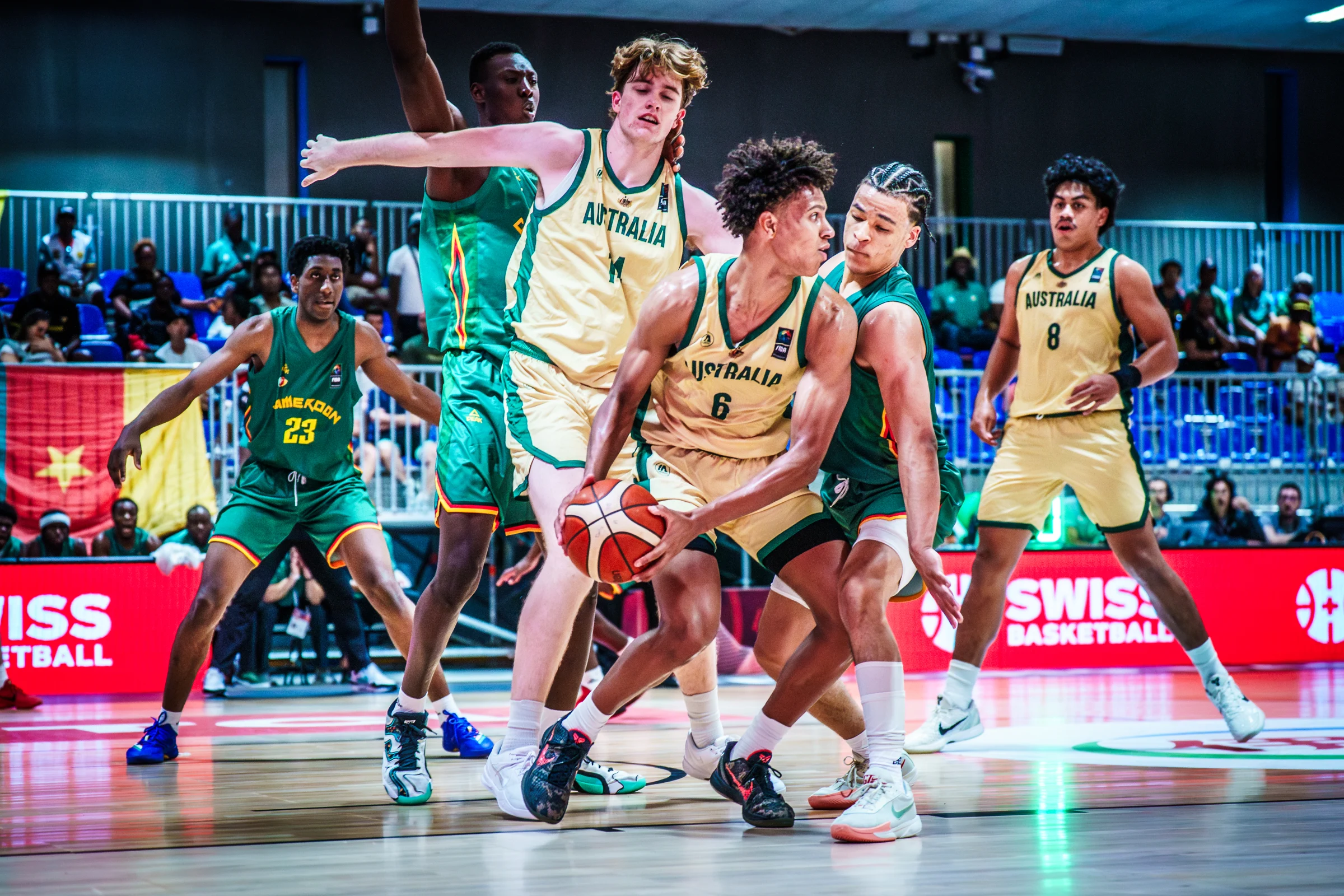
“I think the upside is very real. He has a very real chance to be quite good at some point, it’s just that the skill level is a step down… my worry is that he hasn’t shown the level of offensive growth that I expected.”
Adam Finkelstein, Vecenie’s podcast guest and Director of Basketball Scouting at CBS Sports, had similar concerns.
“I get the upside play, but I’m just not ready to call this guy a draft pick next year, certainly not a lottery pick,” Finkelstein said.
“I don’t think it’s fair to put that on him.”
Finkelstein made a strategic point about the incentive for Daniels to wait an extra year, not only for his own growth, but also due to external factors such as the overall strength of one draft class compared to another.
“I recognise we’re in a world where people are drafting on potential, but if I’m [Dash] and I don’t even turn 18 until the end of December next year, and I’m looking at a very strong 2026 draft and then a 2027 draft that, right now, looks like the polar opposite, I’m running my own race,” he added.
Indeed, there is a firmly held consensus among experts that the ‘27 draft class is not shaping up to be a strong one.
Jonathan Givony, founder of the well-known Draft Express and former ESPN draft analyst, reported back in July that league executives “are already ringing alarm bells in their front offices for the 2027 NBA draft, which appears to be an especially weak group of rising high school seniors and international players.”
This added even more incentive for a player in Dash’s position to be open to spending two years as a Next Star. Monetarily speaking, he could stand to gain millions by waiting a year and improving his draft position among a weaker crop of talent, let alone the value that could have for his basketball development.
Although Dash is probably viewed as a better prospect at the same age than Alex Toohey was, we saw the value that an additional year as a Next Star had for Toohey. In year one, the game often looked sped up, and it appeared difficult for him to make an impact. In year two, Toohey looked much more comfortable and confident, which likely solidified his standing with NBA teams as Golden State pounced on the 6’8” playmaker.
Judging from Daniels’ performance with United at the recent NBL Blitz, you could see some similarities in his experience. Dash’s defence was more than adequate, but the offence appeared a ways away, attempting just eight shots in two games.
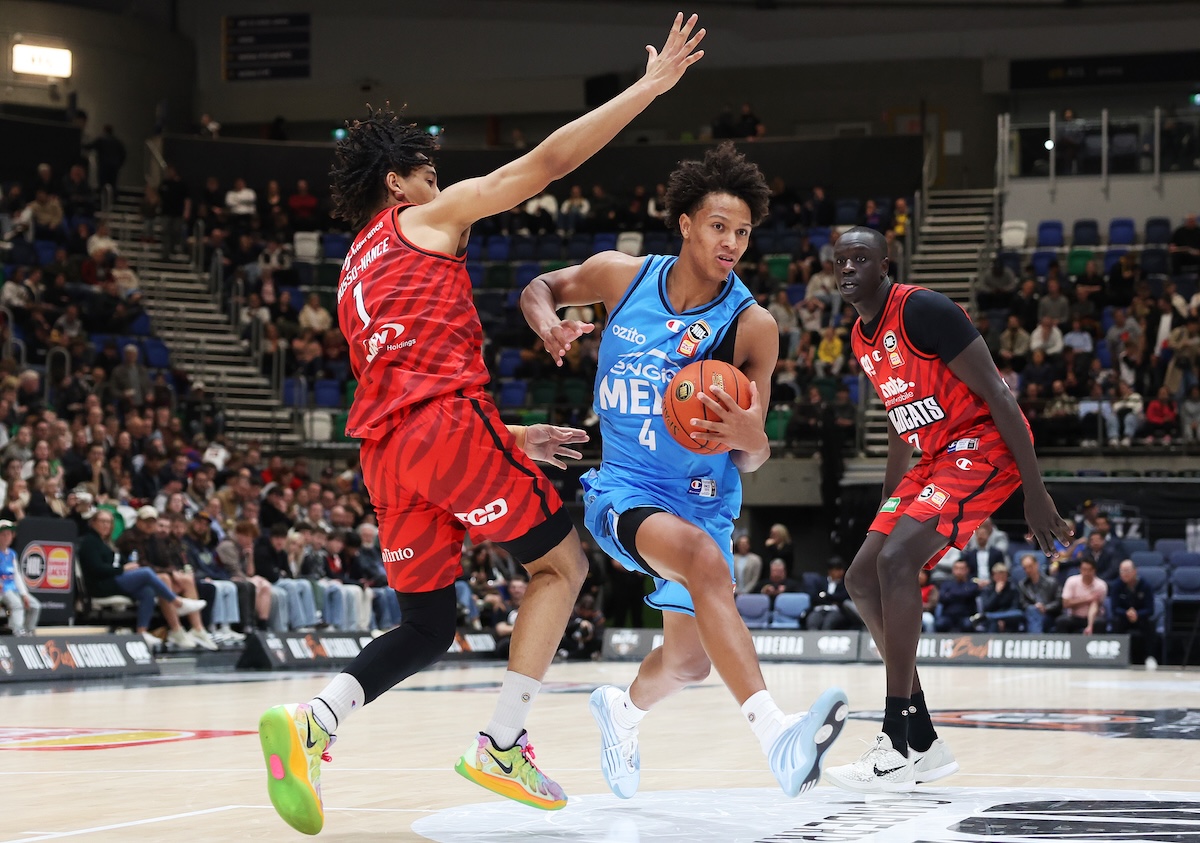
But then the NBL26 regular season hit, and even though it’s only been six games (including United’s exhibition against the New Orleans Pelicans), Daniels has been turning heads. So far in regular NBL play, Dash is averaging 8.2 PPG on 52% shooting from the field,1.6 APG, 4.2 RPG, and 1.2 SPG. He even posted 11 points and six rebounds against an NBA team in the Pelicans.
Daniels’ start to the season surprised analysts from all around the world, who weren’t expecting him to look so comfortable so early. Sam Vecenie tweeted that Dash “is WAY more ready for high-leverage minutes” than he expected. Bounce Pass’ own Michael Houben had similar thoughts, writing that the budding star is “much further ahead” than he would've expected. Jonathan Givony wrote that he “continues to look ahead of schedule for Melbourne.”
This raises the question: How has Daniels improved to the point that these analysts are surprised by the early production? I think the first element to mention is that the Melbourne United system has fit Dash’s game like a glove. Certainly, on the defensive end, the way United likes to pressure the ball 94 feet showcases Daniels’ ability to wreak havoc. And then on the offensive end, where many thought he might struggle, there seems to have been an explicit instruction to get downhill as much as possible. Dash has been able to play off second-side actions and attack advantages created by the likes of Milton Doyle and Tyson Walker, using his big frame to burrow into sweet spots where he can shoot floaters and create for teammates.
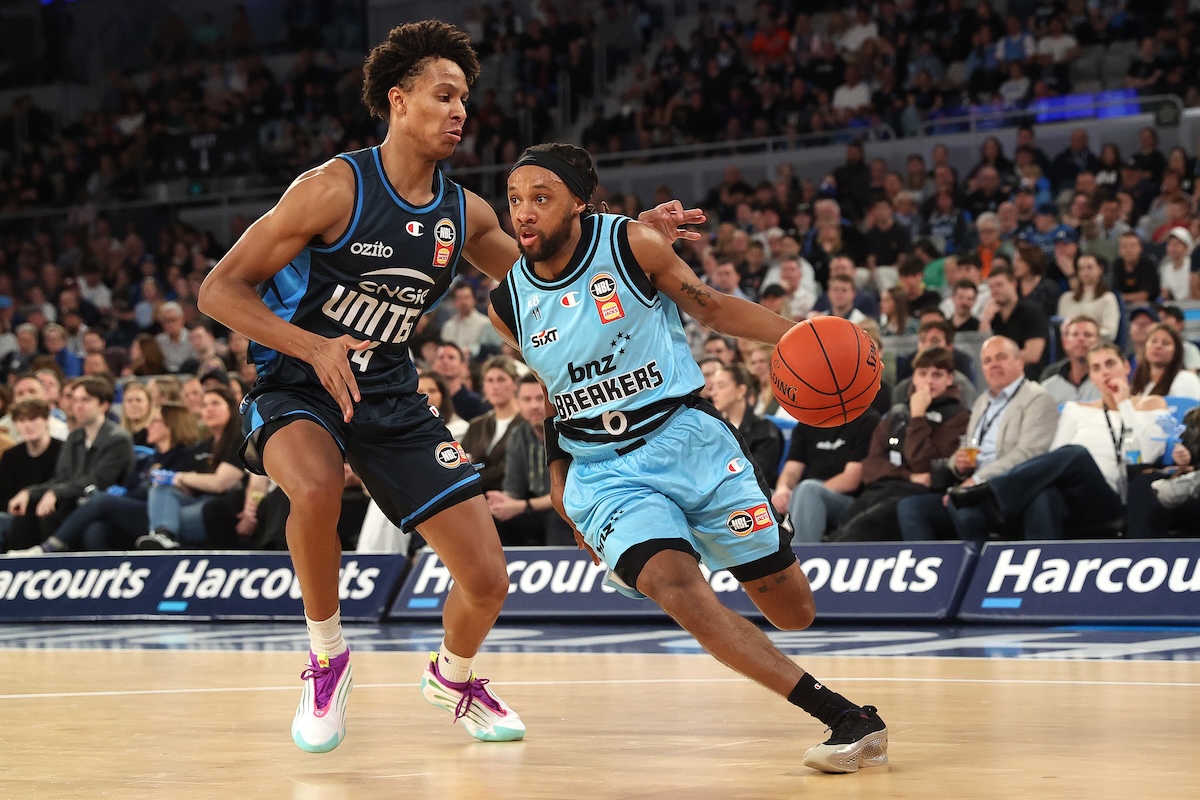
System aside, it’s clear that Daniels put in a lot of work on his in-between game before the season, because the touch has been much better than I recall it being in prior competitions. After spending the second half of NBL25 training with United following his commitment to play there in NBL26, it seems as though Dean Vickerman and the Melbourne coaching staff prepared Dash well for the looks they envisioned him getting in their offence, giving him a clear understanding of what to work on in the offseason.
Now, if there is one part of Daniels’ game that remains something of a question mark, it’s the three-ball. And to be clear, it’s not like Dash has been shooting poorly by any means; after five games, he’s 5/13 (38.5%). However, while I do believe he’s got some natural soft touch, there is a noticeable hitch in the shot mechanics, which can result in some bad misses from time to time.
On the whole, though, I’d imagine most NBA evaluators would be really pleased with where Daniels is at as he rounds into a much more complete player. Should the production continue at the level it is, you’d think he’d be advised to enter the ’26 draft, and there would be no need for year two as a Next Star. Of course, there’s a lot of water to go under the bridge, and the sample size is very small at this stage. Maybe he keeps this up, perhaps he doesn’t. Regardless, one thing is for sure: this has been an eye-opening start to professional basketball for Dash Daniels.
Exclusive Newsletter
Aussies in your Inbox: Don't miss a point, assist rebound or steal by Aussies competing overseas. Sign-up now!


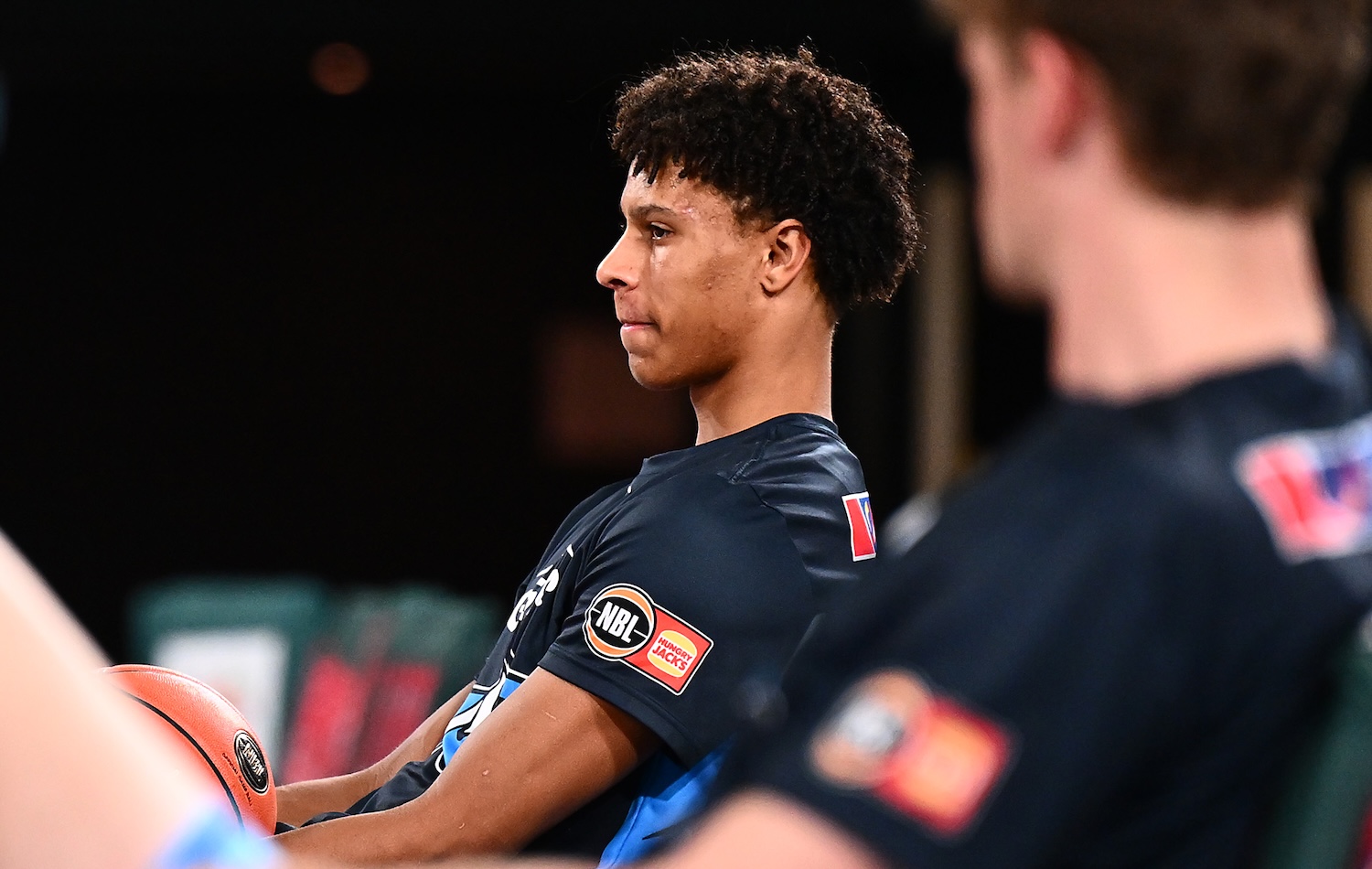
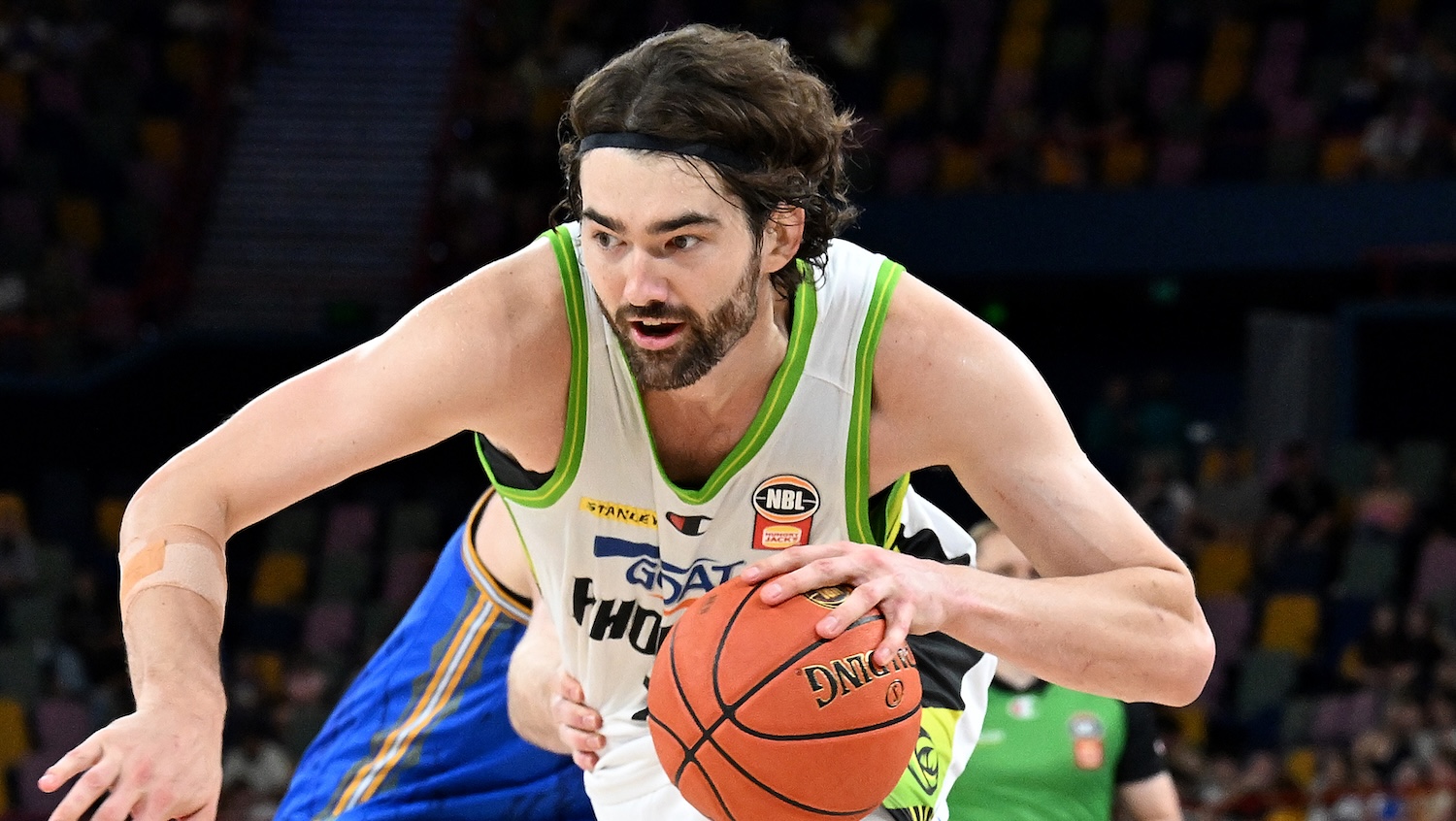

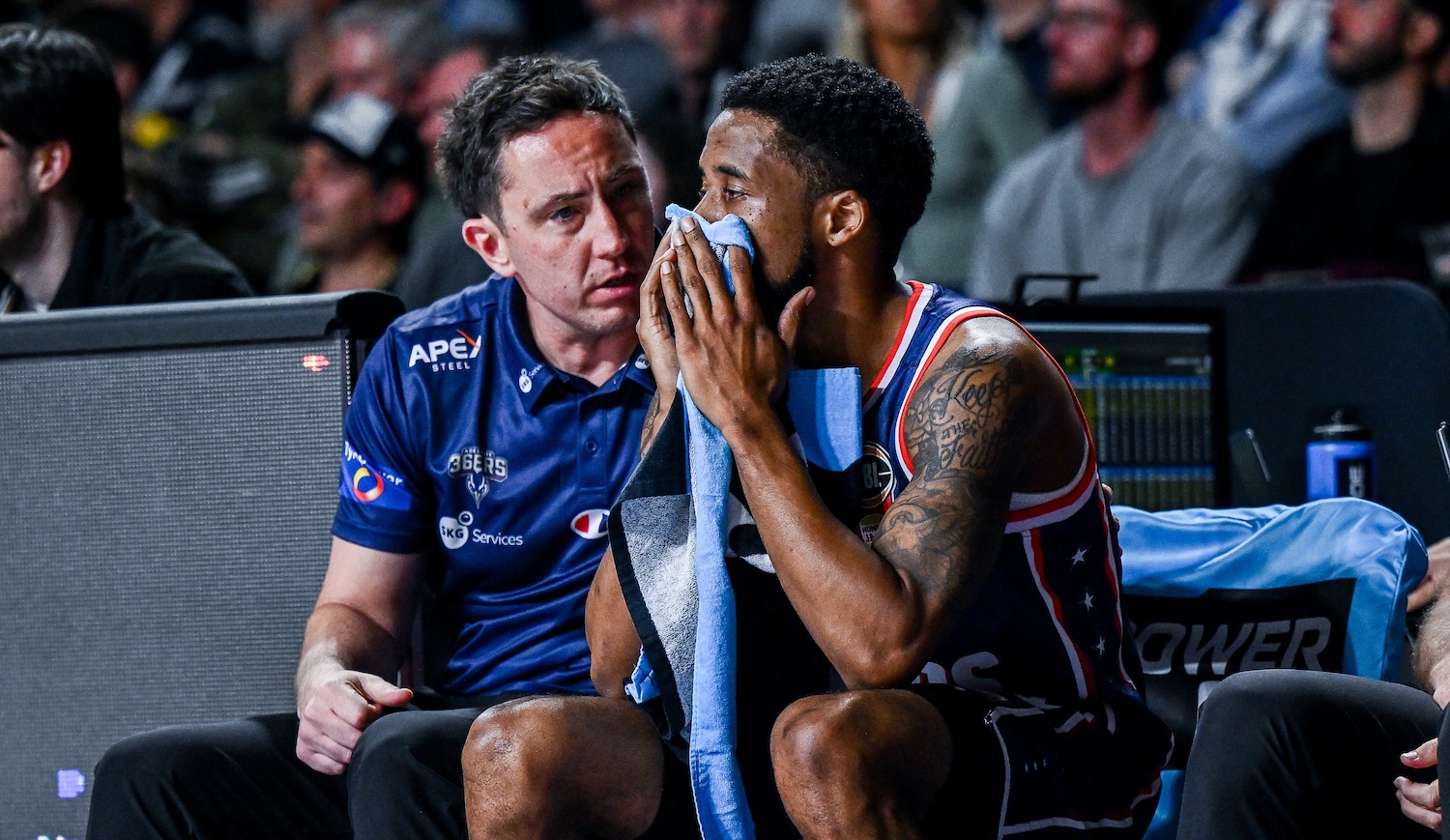
.jpg)
